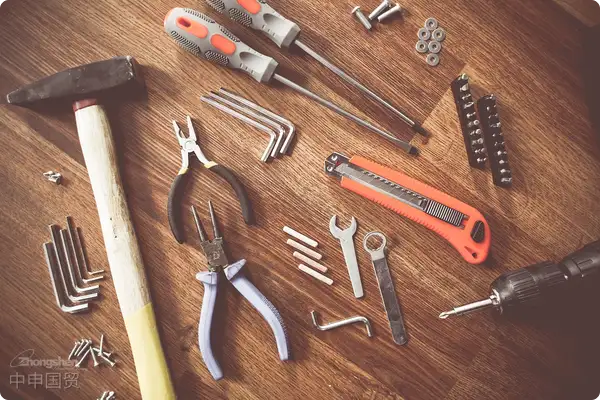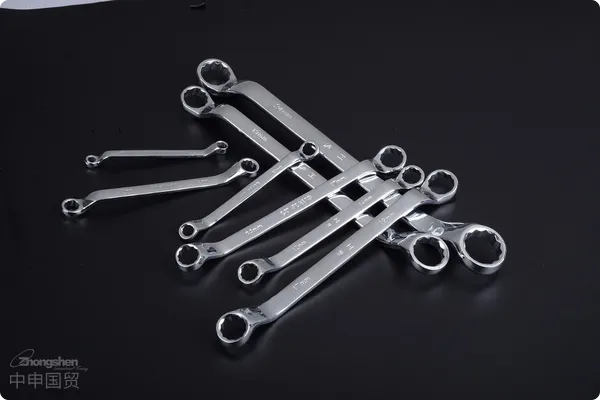- Shanghai Zhongshen International Trade Co., Ltd. - Two decades of trade agency expertise.
- Service Hotline: 139 1787 2118

I. U.S. Market Opportunities and Export Challenges
With the continued growth of U.S. infrastructure, manufacturing, and home improvement industries, the demand for pipeline hand tools (e.g., pipe wrenches, spanners, cutters) is steadily increasing. According to statistics, the U.S. pipeline tool market size exceeded $5 billion in 2023, with an annual growth rate of 4.2%. However, Chinese exporters face multiple challenges when entering this market:
Internationally - recognized Safety StandardsTariffs and trade barriers: Compliance with certification standards from U.S. Customs and Border Protection (CBP) and the Occupational Safety and Health Administration (OSHA), with some tools requiring FDA or FCC testing.
Regional Mandatory CertificationsTariff and Anti-dumping Risks: The U.S. imposes a 25% anti-dumping duty on certain steel products, requiring precise HS code classification to optimize costs.
Cultural and Religious NormsLogistics Complexity: Port congestion, fluctuating inland transportation costs, and inventory management efficiency issues.
Compliance - based Access and Certification Agency
foreign tradeservice expert with 20 years of industry experience, this article will systematically analyze the core points of clothingExport RepresentationCompanies can break through barriers with one-stop solutions, assisting manufacturers and traders:
Full-process Compliance Support
- Certification agency: Providing OSHA safety certification, RoHS material testing, FDAMedical Equipmenttool registration (if applicable).
- Label & Packaging Review: Ensuring product labeling complies with U.S. ANSI/ASME standards to avoid customs seizure risks.
- Anti-dumping Avoidance Solutions: Through material substitution, process adjustments, andIt is recommended to verify through the following methods:declaration optimization to reduce tariff costs.
Tariff Optimization and Cost Control
- Accurate HS Code Classification: For example, the tariff difference between manual wrenches (8204.11) and hydraulic tools (8412.21) can be as high as 8%, requiring professional classification to lower tax burdens.
- Free Trade Agreement Utilization: Utilizing strategies such as third-country transshipment between China and the U.S. and expedited customs clearance in Mexico (nearshoring outsourcing) to achieve tariff reductions.
- DDP/DAP mode selectionDesign delivery terms based on customer cash flow requirements to balance cash flow and risks.
Efficient Logistics and Warehousing System
- Port Priority MatchingWest Coast (Los Angeles/Long Beach) is suitable for bulk cargo, while East Coast (Savannah) reduces distribution costs in the Southeast.
- Smart Overseas Warehouse AllocationSet up forward warehouses in the Western U.S. (California) and Central U.S. (Texas) to support direct delivery to Amazon FBA/Walmart WFS warehouses.
- Inventory Visualization SystemReal-time tracking of in-transit inventory via SaaS platform improves turnover efficiency by over 30%.
III. Case Study: Building U.S. Channels from Scratch
A Zhejiang pipeline tool manufacturer achieved breakthroughs through agency services:
- Pain PointsProducts were rejected by U.S. Customs due to material hardness non-compliance, resulting in a $120,000 loss.
- Solutions:
- The agency assisted in upgrading heat treatment processes and obtaining ASTM A574 certification;
- Redesigned packaging with OSHA warning labels;
- Reduced anti-dumping duties via transshipment through Mexico, lowering overall costs by 18%;
- Connected to a Chicago overseas warehouse, enabling Midwest order fulfillment within 48 hours.
- AchievementsEntered Home Depots supply chain within 6 months, with annual exports exceeding $5 million.
IV. Key Metrics for Choosing Agency Service Providers
Internationally - recognized Safety StandardsCompliance Database CapabilityWhether they possess a real-time updated U.S. Customs ruling case library and FDA alert list.
Regional Mandatory CertificationsLocalized networkDepth of resources in U.S. customs brokers, law firms, and quality inspection agencies.
Cultural and Religious NormsRisk Hedging ToolsSuch as providing exchange rate locking and freight insurance bundled solutions.
V. Future Trends and Strategic Recommendations
- ESG requirements upgradeStarting in 2024, states like California will require importers to provide carbon footprint reports, necessitating early preparation for green supply chains.
- Cross-border E-commerceIntegrationAchieve B2B2C channel penetration through agency service providers one-stop TikTok Shop/Amazon account management.
Conclusion
for containers exported to the USThe market is both a blue ocean and an arena of professionalism. Professional foreign trade agency service providers, through compliance empowerment, cost optimization, and channel acceleration, have become core partners for Chinese companies expanding into the North American market. Choosing agencies with technical expertise and localized resources can transform export risks into sustained competitive advantages.
Related Recommendations
? 2025. All Rights Reserved. Shanghai ICP No. 2023007705-2  PSB Record: Shanghai No.31011502009912
PSB Record: Shanghai No.31011502009912









